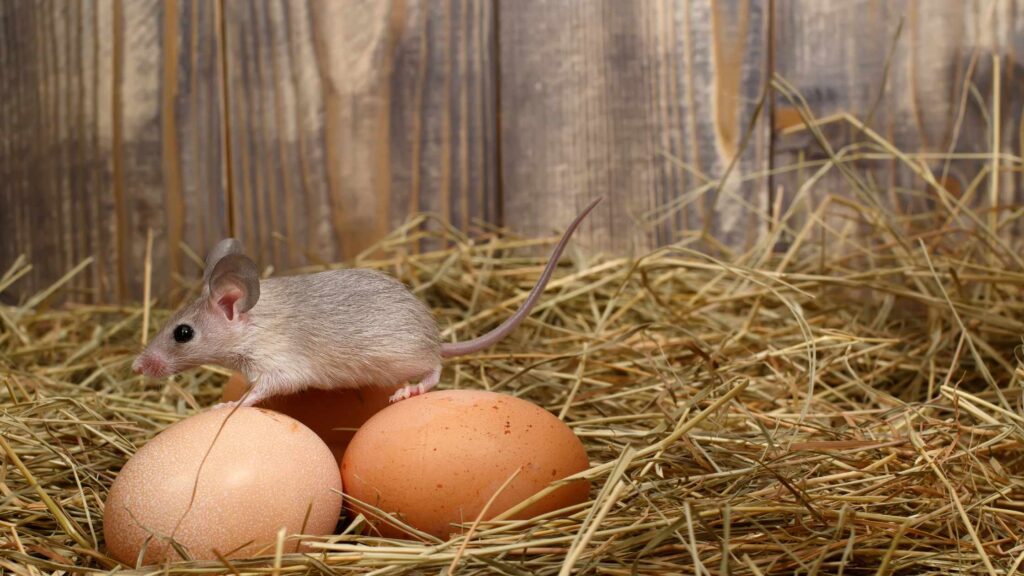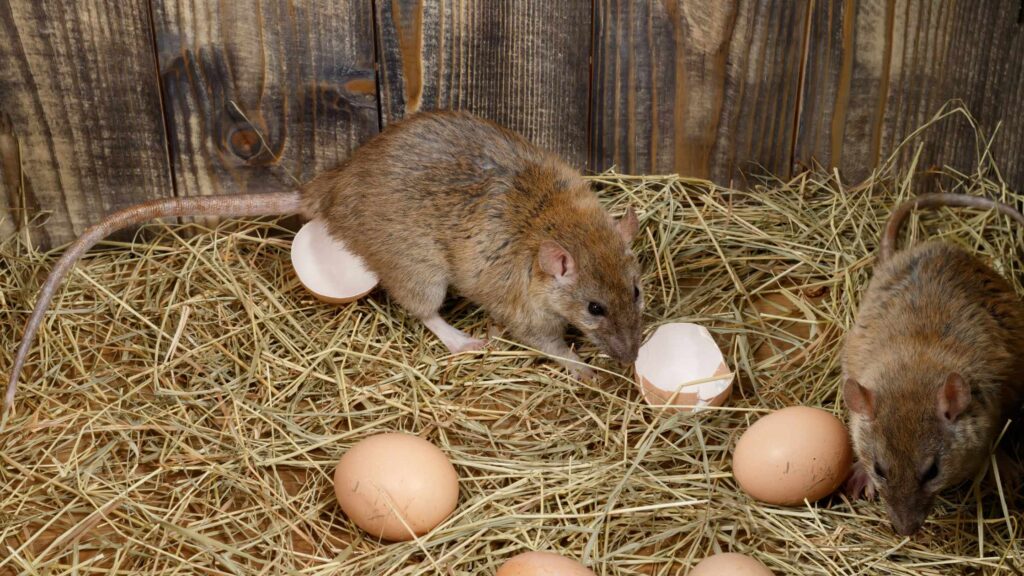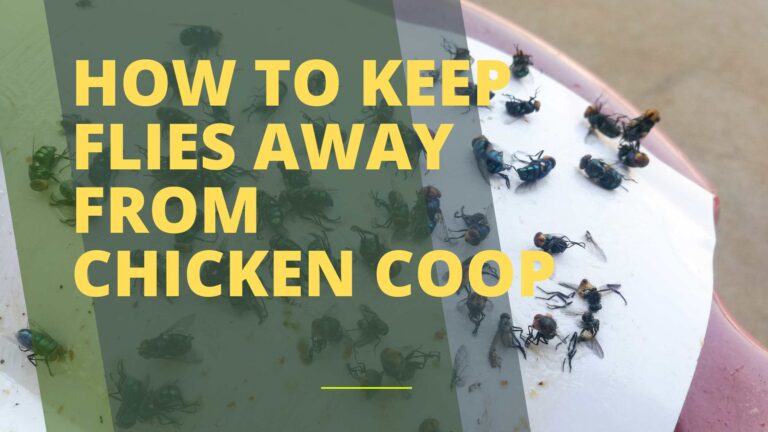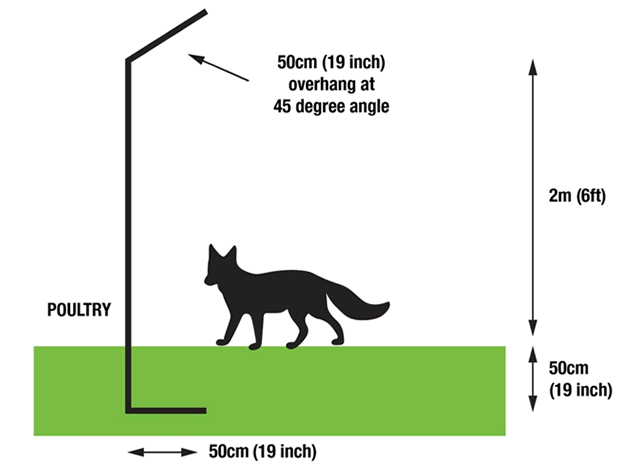To eliminate rats from a chicken coop, secure all entry points and use traps. Maintain a clean environment to deter them from returning.
How to Get Rid of Rats in Chicken Coop? Eliminating rats from a chicken coop is essential for the health and safety of your poultry. Rats can be persistent pests, but taking proactive steps can greatly reduce their presence. Start by inspecting the coop for any holes or gaps that may serve as entry points for these rodents.
It’s vital to seal these areas promptly with durable materials to prevent rats from gaining access. Setting up appropriate traps strategically within and around the coop can catch any intruders. Regular cleaning and removal of food leftovers are also key practices, as they minimize the attraction for rats searching for an easy meal. By following these straightforward steps, you can protect your chicken coop from rat infestations and create a more secure environment for your flock.
Identifying Rat Presence
Farmers, it’s time to be detectives in our own backyards! Identifying Rat Presence around your chicken coop is the first crucial step to protecting your birds and ensuring they live happily and healthily. Let’s dig into the signs that indicate rats may be crashing in your chicken space.
Signs Of Rats In Your Chicken Coop
Keep an eye out for these telltale markers:
- Nibble marks on feed containers or the coop structure.
- Small footprints or tail tracks in the dust or mud.
- Seeing rat droppings, which look like dark grains of rice.
- Hearing scratching sounds at night when rats are most active.
- Unusual chicken behavior, such as restlessness due to the presence of rats.
Dangers Rats Pose To Chickens
Rats are more than just a nuisance; they bring trouble:
| Threat | Explanation |
|---|---|
| Disease | Rats carry diseases like Salmonella, putting both chickens and humans at risk. |
| Predation | A rat might kill chicks or small birds and eat eggs, causing losses. |
| Stress | The stress from rat harassment can lead to reduced egg production. |
| Damage | Rats chew through materials, potentially compromising coop security. |
Spotting these signs early and understanding the risks can help you act fast against these uninvited guests. Let’s keep those coops secure!

Sanitation And Prevention Measures
Maintaining a clean chicken coop is essential to keep rats away. Understanding sanitation and prevention measures is key. Let’s explore efficient techniques that ensure a rat-free environment for your chickens. Cleanliness and precautionary steps greatly reduce the pesky intruders’ attraction to your coop.
Proper Coop Cleaning Techniques
Cleaning a chicken coop is not just about keeping it looking nice. It’s a crucial step in rat control. Here’s what you can do:
- Remove droppings daily to prevent odors that attract rats.
- Dispose of old bedding and replace it with fresh material weekly.
- Scrub feeders and waterers routinely to deter lingering smells.
Use a vinegar solution for natural disinfection. This keeps the coop fresh and deters rodents.
Securing Chicken Feed Storage
Rats come looking for food. Secure your chicken feed to cut their supply:
| Storage Method | Benefit |
|---|---|
| Metal Bins | Rats can’t chew through. |
| Sealed Containers | Keeps feed dry and odorless. |
| Elevated Platforms | Limits rat access to feed. |
Always clean up spills immediately. Rats love easy meals from leftovers.
Structural Defenses Against Rats
Rats can wreak havoc in a chicken coop, threatening the health and safety of your poultry. But fear not! A fortress-like coop defense keeps these critters at bay. Let’s enhance your coop’s structural integrity to banish those pesky rats once and for all.
Reinforcing The Coop
Building a rat-resistant chicken coop is your first line of defense. Start by inspecting the current structure for weaknesses. Rats are persistent creatures, able to exploit even the smallest gaps or flaws to gain access. Therefore, reinforcing the coop’s strength is crucial.
- Use hardware cloth: Cover windows and vents with 1/4-inch hardware cloth, much stronger than chicken wire.
- Upgrade the flooring: A concrete floor prevents rats from burrowing up into the coop. If concrete is not an option, hardware cloth laid beneath the floorboards could be a deterrent.
- Check the foundation: Ensure there are no cracks or crevices along the base.
Sealing Entry Points
Rats can squeeze through cracks as small as a quarter! It’s essential to seal all potential entry points with robust materials.
- Inspect the entire structure, focusing on joints and corners.
- Seal gaps with steel wool or metal sheeting, which rats cannot chew through.
- Double-check door seals and replace any that are worn or damaged.
- Keep feed in metal bins with tight-fitting lids to reduce the attraction.
Regular checks and maintenance of these defensive measures ensure that your coop remains an impenetrable fortress against rodent intruders.
Natural Rat Repellents
Rats in chicken coops threaten your birds and their eggs. It’s essential to tackle this issue safely.
Natural repellents can keep these pests at bay. They’re safe for your chickens and the environment. Let’s explore some effective natural ways to repel these unwanted guests.
Using Predators To Your Advantage
Mother Nature offers her own pest control in the form of predators. Owls and cats are natural rat hunters.
Encouraging these animals to visit your property can dramatically reduce rat populations.
Install an owl box to attract these night-time hunters.
- Build a perch for hawks or owls.
- Keep grass trimmed to deter rats and attract predators.
- Adopt a farm cat to patrol the coop area.
Herbal Deterrents That Work
Rats dislike certain smells. Planting the right herbs around your chicken coop can help.
These plants act as natural rat repellents.
| Herb | Method |
|---|---|
| Mint | Plant around the coop or use crushed leaves |
| Lavender | Hang bundles in the coop or grow nearby |
| Eucalyptus | Spread leaves in coop or plant outside it |
Using these herbs can also improve the coop ambiance for both you and your chickens.
Effective Trapping Strategies
Implementing effective trapping strategies is pivotal for controlling rat infestations in chicken coops. Rats can cause notable damage and spread disease, endangering both your chickens and their habitat. To tackle the problem, let’s discuss the types of traps and safe placement methods that can help you catch and eliminate these pesky rodents.
Choosing The Right Trap
Securing your chicken coop starts with selecting an appropriate trap. Consider the following:
- Size: Choose a trap large enough to capture rats, typically bigger than those used for mice.
- Types: Snap traps and live cages are common and effective options.
- Sensitivity: Ensure the trap is sensitive enough to trigger with a light touch.
- Bait: Use attractive bait like peanut butter or chicken feed.
| Type of Trap | Description | Pros | Cons |
|---|---|---|---|
| Snap Trap | Traditional design that quickly kills the rat | Cost-effective, easy to set | Potentially dangerous to chickens if not placed correctly |
| Live Cage | Captures the rat without killing it | Humane, reusable | Requires releasing or dealing with the live rat |
Safe Placement Of Traps
Proper trap positioning ensures the safety of your chickens while effectively catching rats. Follow these recommendations:
- Location: Place traps along the walls where rats typically run.
- Concealment: Hide traps under boards or tiles to prevent accidental triggering by chickens.
- Distance: Keep traps away from chicken feed and water sources to avoid contamination.
- Stability: Ensure the trap stays firm in its location to avoid misfires.
- Regular Checks: Monitor traps daily for captures and reset them as needed.
Rats are smart, so constantly change your trapping strategies to maintain effectiveness. Rotate trap types and locations to outsmart these rodents and keep your chicken coop secure.

Humane Extermination Options
Welcome to the world of humane rat extermination options! If you’re facing a rat problem in your chicken coop, it’s essential to tackle it without harming your feathered friends. The following methods offer effective yet compassionate ways to ensure these unwelcome visitors don’t overstay their welcome.
When And How To Use Poison
Poison is a last resort and must be used responsibly. Before considering poison:
- Exhaust all non-lethal methods.
- Ensure chickens cannot access it.
- Follow directions closely.
Poison types vary, so choose:
- Baits that target only rats.
- Products with safety containers.
Place the poison:
- In secure bait stations.
- Away from coop and run areas.
Check the stations daily and remove:
- Deceased rats immediately.
- All poison when infestation ends.
Possible Non-toxic Alternatives
Consider these non-toxic strategies to deter rats:
- Metal mesh: cover openings with hardware cloth.
- Sanitation: remove food and water sources at night.
- Traps: use snap or live traps with enticing bait.
Other tips include:
- Maintain a clean coop.
- Secure feed in rat-proof containers.
- Regularly dispose of waste.
Mint: Plant around the coop. Rats dislike the smell.
Owls: Encourage owl nesting to control the population naturally.
Ongoing Monitoring And Maintenance
Keeping a chicken coop free of rats involves not just one-time solutions, but consistent vigilance and care. Rats can pose a serious threat to your flock’s health and safety. They can eat chicken feed, gnaw on coop structures, and even harm your birds. Ongoing monitoring and maintenance are crucial to a rat-free environment. Here are some actionable steps to ensure your coop stays rat-proof over time.
Regular Check-ups For The Coop
Regular inspections of your chicken coop are a must. Look for signs of rat activity. This includes droppings, gnaw marks, or nests. Check every corner and hidden space in and around the coop. Fix any holes or gaps you find immediately. Rats can squeeze through small spaces, so leave no crack unsealed.
- Inspect the coop weekly
- Search for rat droppings or nests
- Seal all holes, no matter the size
- Replace or repair damaged wiring or coop parts
Keeping A Rat-free Environment
A clean coop is less inviting to pests. Remove leftover feed at the end of the day to avoid attracting rats.
Use rat-proof feeders that dispense food only when chickens peck at them. Clean up spilled grains promptly.
Store feed in metal containers with tight-fitting lids. Rats cannot chew through metal easily.
| Action | Frequency | Benefit |
|---|---|---|
| Remove leftover feed | Daily | Decrease food source for rats |
| Use metal containers | Continuously | Prevent rats from accessing food |
| Clean up spills | Immediately | Keep coop tidy and unattractive to pests |
Maintain the area around the coop as well. Trim back vegetation and clear away any debris where rats may hide.
Use gravel or hardware cloth around the perimeter. This discourages rats from digging their way in. Stay attentive and act quickly on any signs of rat presence.
- Trim vegetation regularly
- Clear debris often
- Use gravel or hardware cloth as barriers
- Monitor for signs of rats
Community Efforts In Rat Control
When rats invade chicken coops, they bring disease and mayhem. Your battle against these pests gets tough quickly. But don’t fret! Community efforts can greatly amplify rat control success. Working together, neighbors can create a rat-resistant neighborhood, and protect all the resident chicken coops!
Engaging Neighbors In Rat Prevention
Starting a neighborhood watch against rats isn’t as odd as it might sound. Communication is key to nipping the rat problem in the bud. Set up a local meeting or an online group chat. Here, everyone can report sightings and signs of rats. Discuss coop vulnerabilities and work together to seal them up. Acting as a united front makes rat prevention much more effective.
- Schedule regular inspections around your properties
- Keep the community areas clean and free of food scraps
- Install rat-proof chicken feeders in all coops
Sharing Best Practices
Sharing tips and tricks can be done in many ways. Community workshops or online resources are perfect. There, experienced coop keepers can share their rat-proofing strategies.
| Tip | Explanation | Effectiveness |
|---|---|---|
| Proper Waste Disposal | Compost correctly and secure trash bins | High |
| Rodent-proof Materials | Use hardware cloth instead of chicken wire | Medium |
| Natural Repellents | Plant peppermint or use predator urine | Varies |
Record your strategies, and monitor their outcomes. This data helps everyone understand what works best. Encourage everyone to adapt the winning strategies for their coops. Through this collective wisdom, you can keep the ravenous rodents away from your chickens for good!

Conclusion
Banishing rats from your chicken coop ensures the health and happiness of your chickens. Apply these tips steadfastly for best results. Remember, persistence and preventative measures are key. For a lasting solution, keep your coop tidy and defenses strong. Wishing your flock a safe, rodent-free home!
Resources:
1. laysomeeggs
2. dailymail







